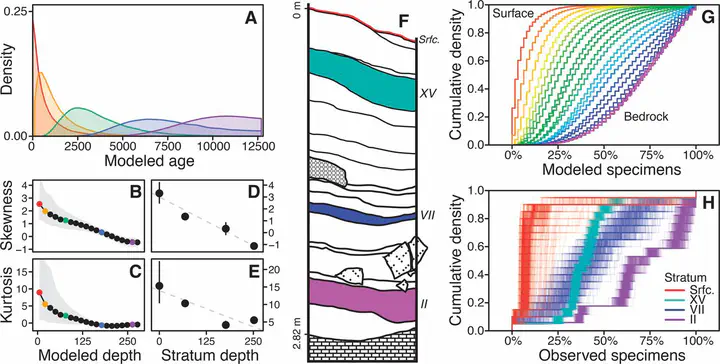Where does the time go?: Mixing and the depth-dependent distribution of fossil ages

Abstract
Knowing how time is distributed within a fossil record is fundamental to paleobiology. Many efforts to quantify temporal resolution have estimated rates of specimen decay from the frequency distribution of specimen ages in near-surface assemblages. The implicit assumption has been that the shape of these distributions is invariant with depth and thus decay-rate estimates reflect the temporal resolution of a fossil record’s deeper layers as well. Here we present a new model that predicts how age-frequency distribution shape will change with depth due to the interplay of burial, mixing, and decay. Unlike previous models, this model distinguishes the dimensions of time, specimen age, and depth, and predicts a right-to-left shift in age-frequency distribution skewness, and a decrease in kurtosis, with increasing stratigraphic depth. We find support for these predictions with the accelerator mass spectrometry 14C dating of 80 small mammal specimens spanning the Quaternary fossil record of Homestead Cave, Utah (United States). Our study indicates (1) that previous models overestimate rates of specimen decay, (2) that the acuity of ecological information captured in near-surface assemblages is higher than previously inferred, and (3) how time-averaging can alter the apparent dynamics of biodiversity over time. We thereby offer a new quantitative framework to account for time-averaging, to merge modern and paleontological archives, and to place ecological systems within the context of their past dynamics.